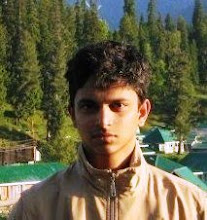Shobana Jeyasingh, 53, is one of England's most sought-after dance choreographers, and the company she leads has redefined dance in Britain.
Nigel Britto
It's a homecoming of sorts. It was over two decades ago that a wide-eyed Chennai-born girl left for London. She got a degree in Renaissance studies from the University of Surrey, but it is her mastery of Bharatanatyam rather than Botticelli that has made her famous.
Today, Shobana Jeyasingh, 53, is one of England's most sought-after dance choreographers, and the company she leads has redefined dance in Britain. This week, Jeyasingh will add India to the list of countries (US and most of Europe) she has already wowed. Her compelling choreography and the technical brilliance and dazzling diversity of her eight dancers will be on display in Mumbai and Bangalore.
Jeyasingh has chosen her pioneering works Faultline and Bruised Blood for her India round. Faultline is based on Gautam Malkani's book Londonstani where the characters are disaffected, violence-prone Asian youth. "It is a response to the unease that I felt in Britain after the 2005 London tube bombings when it was difficult to be young, Asian and male, " Jeyasingh says. It features the Indiaborn British soprano Patricia Rozario singing live. If this combination of art styles is unique, the second, Bruised Blood gets quirkier, as do the contemporary costumes her dancers don. It's about the Harlem riots of the 60s and will feature world champion finalist beatboxer Roxorloops performing live.
"I have long been an admirer of Patricia's voice. In Faultline I was looking to create a tension between the historical and the contemporary, " says Jeyasingh, who was awarded the MBE in 1995 for her services to dance. The dancers in her multinational troupe - they come from Spain, Vietnam, Italy and Finland - are drawn on the basis of their own ethnic dance languages, giving the troupe a stylistic depth that few others have.
The underlying theme in all Jeyasingh's productions is social integration. Although she has lived in Britain for almost 30 years now, India pops up like running stitch in her work. "However, " she says, "art also connects just by being itself, despite geographical and cultural differences. If I didn't believe that I would not have gone to study Shakespeare in Britain as an Indian nor would I see so many pizza restaurants in India. "
Soprano Rozario, an OBE who is India's most famous western classical export after conductor Zubin Mehta, first met Jeyasingh eight years ago in London. "I was impressed with the fact that she integrated elements of Indian dance into her contemporary dance creations, as well as commissioned contemporary composers to write the music for her dances and has live musicians performing it, " Rozario said on the phone from the UK. Jeyasingh attributes this to her heritage. "I guess my history of migration, the deep influence of Indian dance on my kinesthetic literacy and the dynamics of a city like London where we are based, all add to it. "
In 22 years of dancing, Jeyasingh has learned a thing or two about the industry. She's positive about the fact that audiences have matured. "I think there's more of an audience which is willing to be stimulated and questioned by the new rather than be reassured by the things they recognise, " she says. However, she recognises the problems of a choreographer-led troupe at face value. "It is still difficult to start and maintain a dance company. However, I think it is easier now to gain credibility for the contemporary in dance. "
She also feels market dynamics play an important role in the evolution of dance. "You can't ignore its ubiquity, " she says. "But it's an artiste's choice, where they place themselves in relationship to it. It also depends on where the financial patronage of the artist comes from. In Britain, there has been a tradition of state funding for the arts since the last century. However, this is set to change and the market will play a much more dominant role than it has done now. " In order to help young dancers understand the nuances of the industry, she will also be holding workshops and talks in Delhi (November 10) and Mumbai (November 15).
Finally, with such variety at her disposal, how does she piece a work together? A choreographer, she replies, is like a poet or writer but one who has to make up her own language to write the story or poem. "The dancers supply the words and the sounds. Their different backgrounds mean they supply a variety of words. It is then the task of the choreographer to make a coherent language out of these diverse sounds and write the story. " Thus, in the final work, the elements may hardly be recognisable, but they will all have contributed to the story. "All the dancers work together like colours in a painting. They are mixed, blended, layered, painted over, etc, so that finally the viewer sees the picture and not the individual brush strokes. "
This article was first published in The Times of India's Crest edition on November 6, 2010.


No comments:
Post a Comment